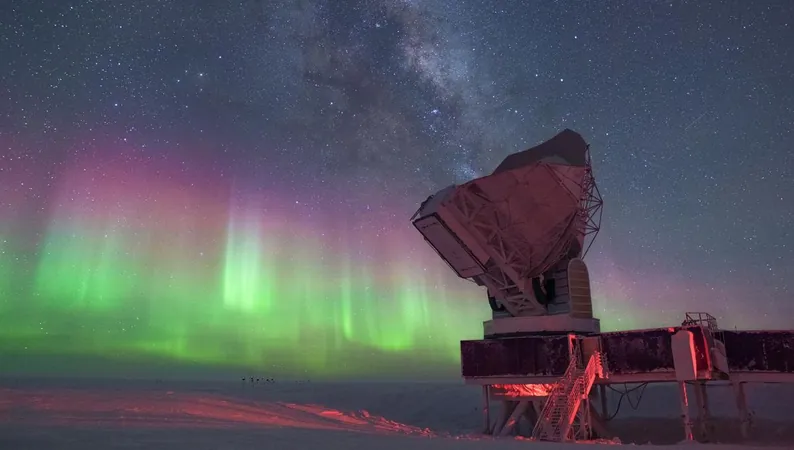
Groundbreaking Cosmic Microwave Background Measurements Intensify the Enigma of "Hubble Tension"
2025-01-07
Author: Arjun
Introduction
In an astonishing breakthrough in astrophysics, astronomers have made high-precision measurements of the Cosmic Microwave Background (CMB), the remnant radiation from the Big Bang, which could provide crucial insights into the mysterious phenomenon known as "Hubble Tension." Released roughly 400,000 years post-Big Bang, this faint glow forms a critical map of the early universe, revealing its composition and structure.
Advancements in Ground-Based Observations
While the full expanse of the CMB can only be charted from space – notably by missions like the Planck satellite – recent advances from ground-based observations have yielded striking accuracy. The South Pole Telescope (SPT) recently executed a pioneering study focusing on the polarization of CMB light, a method that reveals the orientation of light waves and offers deeper understanding of the universe at the moment this primordial light was emitted.
Significance of the Study
"Almost all of our cosmological constraints come from the CMB… but recent SPT measurements utilize polarization data, providing an independent probe of the universe's expansion," states Professor Tom Crawford from the University of Chicago, underscoring the significance of this research.
Contradictory Measurements of Cosmic Expansion Rate
Previously, measurements of the universe's expansion rate indicated a value of 67.4 kilometers per second per megaparsec, derived from CMB data, contrasting with a higher estimate of 73 kilometers per second per megaparsec derived from direct observations of nearby galaxies. The discordance between these two methods has sparked debates about the expansion of the universe and the underlying physics governing it, referred to as the "Hubble Tension."
Aligning Measurements and New Questions
The recent polarization measurements from SPT, however, align closely with the Planck datasets, adding a new layer of complexity to this mystery. "The SPT results could have ranged from agreement with Planck to matching local measurements, and strikingly, they aligned precisely with Planck data," Professor Crawford elaborated.
Critical Questions Inputted
This situation raises critical questions: Are scientists potentially underestimating their uncertainties, or is there a fundamental flaw in our current cosmological models? The answers remain elusive, and the urgency for follow-up observations is paramount.
The Role of the South Pole
The South Pole, recognized as the premier location on Earth for deep, low-noise CMB observations, played a pivotal role in this study. The SPT-3G camera used is acclaimed as the most powerful high-resolution CMB camera functioning today. "The depth of our findings, aided by innovative analysis techniques, empowers us to distill cosmological constraints from polarization data that rival traditional intensity measurements," explains Professor Crawford.
Implications for Future Research
As scientists grapple with these revelations, the implications stretch far beyond mere numbers, compelling us to rethink our understanding of the cosmos. What does this mean for future explorations? Is our grasp of the universe's fabric in jeopardy? Stay tuned as we delve deeper into these cosmic mysteries and potential revelations.
 Brasil (PT)
Brasil (PT)
 Canada (EN)
Canada (EN)
 Chile (ES)
Chile (ES)
 Česko (CS)
Česko (CS)
 대한민국 (KO)
대한민국 (KO)
 España (ES)
España (ES)
 France (FR)
France (FR)
 Hong Kong (EN)
Hong Kong (EN)
 Italia (IT)
Italia (IT)
 日本 (JA)
日本 (JA)
 Magyarország (HU)
Magyarország (HU)
 Norge (NO)
Norge (NO)
 Polska (PL)
Polska (PL)
 Schweiz (DE)
Schweiz (DE)
 Singapore (EN)
Singapore (EN)
 Sverige (SV)
Sverige (SV)
 Suomi (FI)
Suomi (FI)
 Türkiye (TR)
Türkiye (TR)
 الإمارات العربية المتحدة (AR)
الإمارات العربية المتحدة (AR)